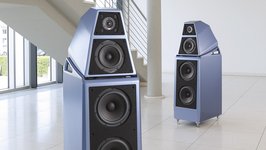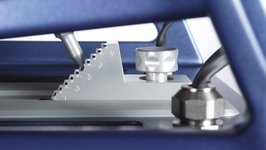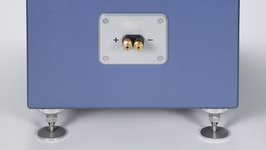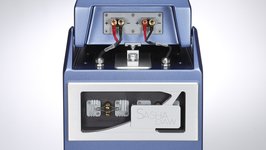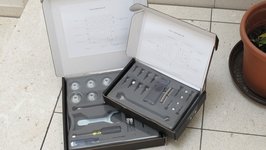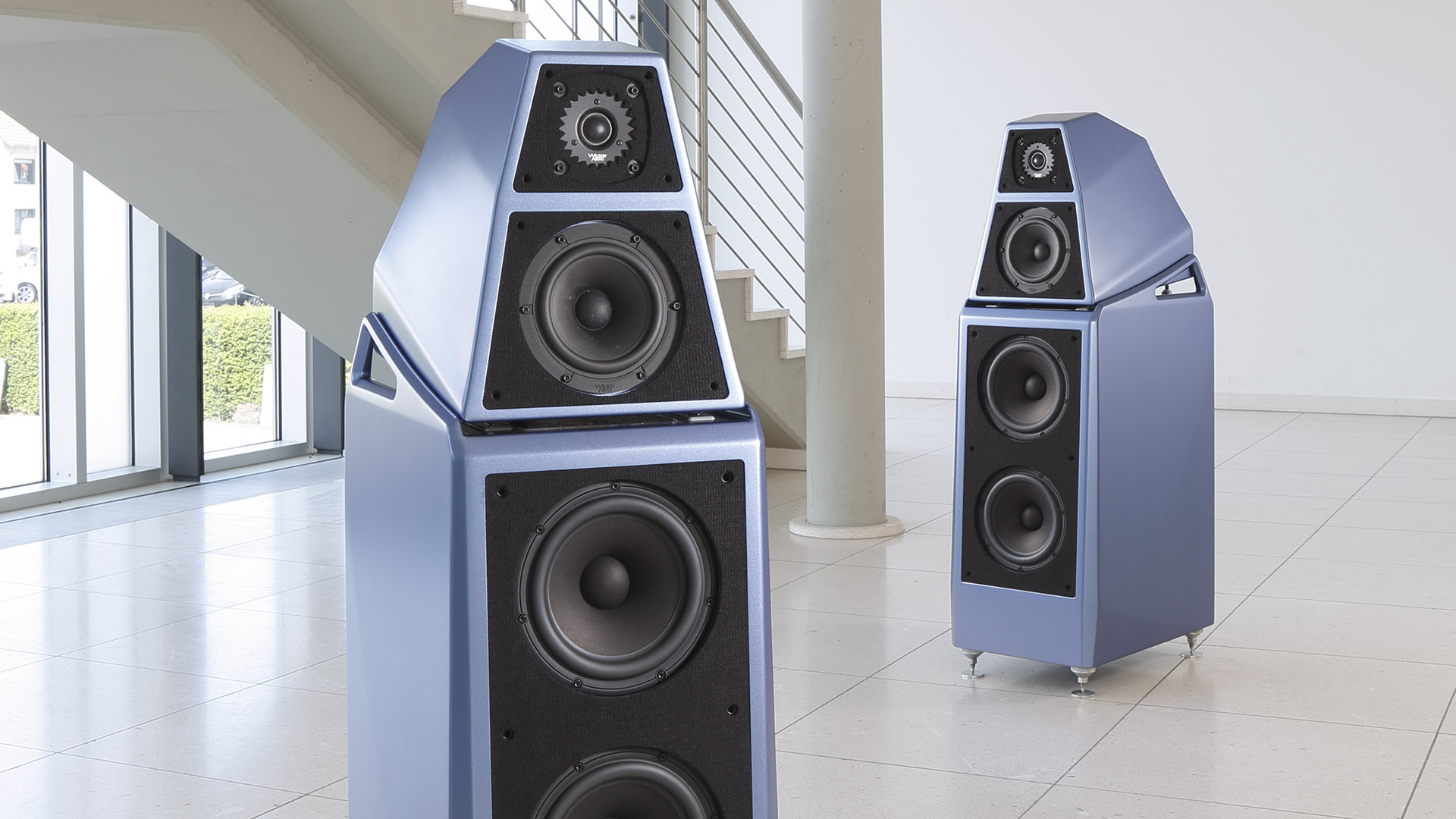
Floorstanding Speaker Test
Wilson Audio Sasha DAW Review
Wilson Moments – While nowadays there are plenty of excellent loudspeakers available, those from Wilson Audio are always surrounded by a very special aura. With a pair of Sasha DAWs we set out in search of extraordinary listening experiences.
A burnt child seeks the fire. This reversal of a proverb perfectly captures our relationship with the loudspeakers from Provo in the US state of Utah. If you have experienced a Wilson Audio once, you will likely always be looking for that certain appeal, which – to put it briefly – consists of a mixture of extreme accuracy and powerful conciseness in all registers. We know what we are talking about: over the years we have had the Sophia 2, Maxx 2 and Maxx 3, Sasha and the first Alexia as guests in our large STEREO listening room. They all have two things in common: at first they blew us away just to deeply captivate us afterwards – and they don‘t exist anymore.
So it is high time to return to past but unforgettable „Wilson Moments“. For our trip into Wilson Audio‘s current world of sound we chose the Sasha DAW. The abbreviation represents the initials of the company founder and mastermind David Andrew Wilson, who died in 2018.
Fifth Biggest Floorstander
Despite its respectable dimensions as well as its substantial price, the Sasha DAW, is only the fifth largest floorstanding loudspeaker in the portfolio, which culminates in the four-part WAMM Master Chronosonic and is as elaborate as it is expensive, costing around 900,000 Euros per pair. Nevertheless the Sasha DAW occupies a special place in Wilson‘s line-up. Not only does it operate the same midrange and tweeter as the terrific WAMM, but above all, it presents like no other the succession of Wilson‘s legendary WATT/Puppy loudspeaker line, which first caused a sensation in 1986 and was instrumental in establishing the company‘s reputation and which introduced the concept of a bass cabinet with an attached but separated midrange-tweeter module.
Already back then and later of course still these speakers played wonderfully on point thanks to their precise timing – David Wilson was one of the first to pay attention to accurate time alignment. It was always great fun to listen to dynamic music and drum recordings and to turn the volume really high, which gave Wilson Audio and especially the WATT/Puppys a bit of a „rowdy“ image, which sometimes slightly obscured their other qualities, for example the ability to deeply explore the internal structure of the music.
We don‘t want to reveal to much yet, but exactly that is also possible with the Sasha DAW, which of course, like the other Wilson speakers, was subject to continuous optimization over time. For example the team switched from the formerly widely used inverted titanium dome tweeter, as it was also implemented in the first Sasha which was introduced in 2010, to the „Convergent Synergy Tweeter“ with silk dome. The latter was already used in the extensively revised Sasha Series 2. In the Sasha DAW it is working in the repeatedly modified „MkV“ version.
Nevertheless, according to the manufacturer, the Sasha 2 and the DAW do not have a single part in common as this was by no means just a partial improvement of the predecessor, but rather „the most extensive upgrade in the history of the platform“, which refers to the WATT/Puppy, of whom the Sasha is a direct descendant.
There is also a lot to discover „backstage“: For example, the clip-on metal frame with window that covers the crossover resistors for the midrange and tweeter. These can be exchanged for other components that are included in the scope of deliver and which have different values to slightly raise or lower the level. They also protect the drivers from overload.
The Sasha DAW is still the most affordable Wilson speaker featuring the multi-piece cabinet that is typical of this manufacturer. The 20 cm woofers are derived from the Alexia Series 2. They are located in the lower compartment being supported by rear facing aluminum ports. This lower module also houses the crossover unit, which is built in the interest of minimal excitation of its parts. The midrange driver and tweeter are located in a second compartment, which is also surrounded by reflection-damping fabric and which is equally ported via a rear opening.
Thus not only the potentially disturbing influence of the woofers on the sensitive overtones is reduced, but this construction also allows for moving the upper unit independently of the bass module. This is incredibly important, as it allows the loudspeaker to be „focused“ on the listening position almost like a lens. Wilson recommends the mid-high unit to be moved into place and tilted with regard to the distance between speaker and listener and the height of the ears using the provided spikes and „stairs“ that can be moved in height.
In doing so, the module, which is guided in aluminum rails, moves backwards or forwards, and the tweeter changes its position not only in relation to the bass compartment, but also in relation to the nearly 18-centimetre big midrange driver thanks to the tilt. The aim is to ensure that all sounds from the lowest to the highest arrive at the listening position at the same time, so that neither impulses are blurred nor the three-dimensionality suffers due to time alignment faults.
In practice, every step, every change, no matter how small, is reflected in the speaker‘s performance. Remarkably, this is not only noticeable at the „sweet spot“, i.e. the central listening position, but everywhere in the room, demonstrating how sensitive the interactions of the different fields of energy are. After all, the Sasha DAWs of course not only interact with the room acoustics, but also with each other.
Careful Positioning
In order to experience these subtle differences, which are essential for the longed-for „Wilson Moments“, the speaker must first be placed correctly. We had already witnessed the necessary procedure often and now once again with the new German distributor Audio Reference.
The first step is to attach measuring tapes to the floor. Once the appropriate base width has been found, i.e. the distance between the loudspeakers and their angles to each other, they are moved forward or backward in increments of one centimeter while always keeping both speakers perfectly in line. After each step an expressive piece of music is briefly played.
This is repeated until all key points such as bass contour, detachment, homogeneity and the right mix of spaciousness and focus are at their best. The procedure can easily take one or two hours. At the end of it, the movements are only in the range of half a centimeter or degree. However the feeling when the sound finally „clicks“ and everything is just right is also simply incredible.
Now the wheels on which the bass compartments stand ex works are exchanged for the supplied spikes and base plates. To do that a lift is necessary that the dealer who is responsible for the assembly will supply. And that‘s it. Bonus advice: leave the bass a tiny bit too rich when setting everything up, because it tightens a little when the wheels are changed for the spikes.
We could write multiple pages just about the complex processing at Wilson Audio. For example, instead of MDF boards, they build their loudspeakers from mineral-enriched phenolic resin boards, the composition of which was determined in extensive listening sessions and tests, as well as through movement diagrams determined by laser systems. There are M, S and X versions, which differ in their physical and thus tonal properties. They complement each other and are respectively just used in the most suitable places for a specific version.
Anyone who has ever seen how coarse and raw the cases look after the basic assembly and before they are ground by hand to the famous refined, streamlined and almost sculptural shapes, will recognize the effort behind a Wilson speaker. This insight allows to put their prices into perspective and the effort is also reflected in the weight: each Sasha DAW weighs a good 107 kilograms.
Audiophile Firework
After the Sashas where hooked up to our reference components and had settled at their ideal position, the last fine cracks in the homogeneity dissolved in favor of perfect integrity. Then it was suddenly there, the „Wilson Moment“ – completely unpretentiously and as if by chance – with Anne Bisson singing „Where Am I Now“ from her superbly recorded direct-to-disc album „Keys To My Heart“.
Her voice appeared expressively and clearly outlined in front of the expanding background, while the athletically moving, sinewy bass filled the performance with suspense, and delivered a foundation that was at the same time solid and propulsive. The difference between kick and punch could be clearly observed: while the kick is all about explosiveness, the punch refers to the energy behind it. The Sasha DAW inspiringly demonstrated the listening pleasure that results from the sober addition of these factors! If required, the sound can be as intense as the powerfully discharging thunderstorm of Rachel Ferrell‘s „Sister“, performed live at the Montreux Festival – also at lower levels.
Moreover, the extremely homogeneous presentation was complemented by numerous, abruptly flashing details embracing the three-dimensionally outlined singer and creating a perfect mixture of authority and subtlety. Here, as well as in many other pieces the progress made by Wilson Audio since our review of the first Sasha in 2011 was evident. First of all, the predecessor did not sound as coherent, well-organized and smooth about ten years ago, but the differences were, in fact, noticeable in all areas, especially in the mids and highs, whose homogeneity and richness of color has increased audibly.
Nevertheless, they haven‘t lost any of the sparkling and exciting fun of playing that has always been inseparably associated with the name Wilson Audio either. Granted: Harry Belafonte‘s vinyl box set from Classic Records of his famous Carnegie Hall concert is a masterpiece musically as well as sonically. However, the Sasha DAW made the absolute best of the recording, which vibrated with life, showed how the musicians moved on stage, delighted in the implementation of the sometimes crazy dynamics. It lent the expansive image spaciousness and breath and conveyed the spirit of the brilliant performance all the more, as it carried the sometimes only subtly audible reactions of the audience, which made it easier for the listener to become involved in the emotions as they were skilfully controlled by Belafonte. It was simply impossible to remain uninvolved, which proves once again how a good system can entirely suspend space and time. After all, the concert took place in 1958, but the Sashas conveyed it with such immediacy as if it had been only yesterday.
While the speakers do need amps of high quality to achieve such peaks, the amplifier does not have to be extremely powerful, since the efficiency of the Sasha DAW is pleasingly high, while its impedance curve indicates „relaxed“ working conditions.
For a sound pressure level of 90 decibels, which is already quite loud, the speakers need just 4.5 watts. They are thus also a matching companion for tube amps with a limited power output. So it is comprehensible that the manufacturer mentions only 25 watts as minimum requirement for the Sashas. The amps we used handled the Wilsons, who now also accept Banana plugs, perfectly and skillfully showed off their qualities.
For example we used Audionet‘s integrated amplifier WATT, with whom the Sasha DAW delivered fascinating sonority and emotional intimacy, although sounding not quite as open and detached as with our reference models from Accustic Arts. That was especially evident in Allen Taylor‘s „Chimes At Midnight“ – this time played via SACD – in which the singer/songwriter gazes out the window of a hotel late one night, observing the lights of passing cars and getting lost in contemplation. With the Sashas, the melancholic scenery came to life, creating a rich sentimental world from the orchestrally supported title – and therefore yet another highly emotional „Wilson Moment“.
Wilson‘s State of the Art
Of course, it also helped the Sasha DAW with James Taylor‘s profound, precise and sharply contoured bass line on „Her Town Too“. The airy and gracefully shimmering but equally voluminous and deeply staggered Skruk Choir, which blew from the very depth of the nave all the way to the listener‘s ears, demonstrating the commitment of a warm summer wind, was no match for the Sasha DAW either, which mastered such feats easily.
We could have gone on like this for almost any length of time. And in the end a few insights were confirmed: the Sasha DAW can easily fill even large rooms with energy, is an ideal partner for many high class amplifiers, plays as unaffected as it is ambitious from soft to hard and – last but not least – presents Wilson‘s current state of the art. If you put a little effort into your setup, you are almost guaranteed to experience a wealth of fascinating „Wilson Moments“.
Verdict
The Sasha DAW has not only lifted Wilson‘s classic WATT/Puppy concept to the cutting edge of technology, but also demonstrates the manufacturer‘s comprehensive know-how at a fair price. It is definitely worth the money – especially since priceless musical enjoyment is already included!
Technical Details
Floorstanding speakers (passive)
Wilson Audio Sasha DAW
Price: from 47300 € (Last check: 22.10.2022)
Dimensions WxHxD: 37 x 114 x 59 cm
Weight: 107 kg
Warranty: 10 years
Manufacturer: Wilson Audio
General Data
Measurement Results
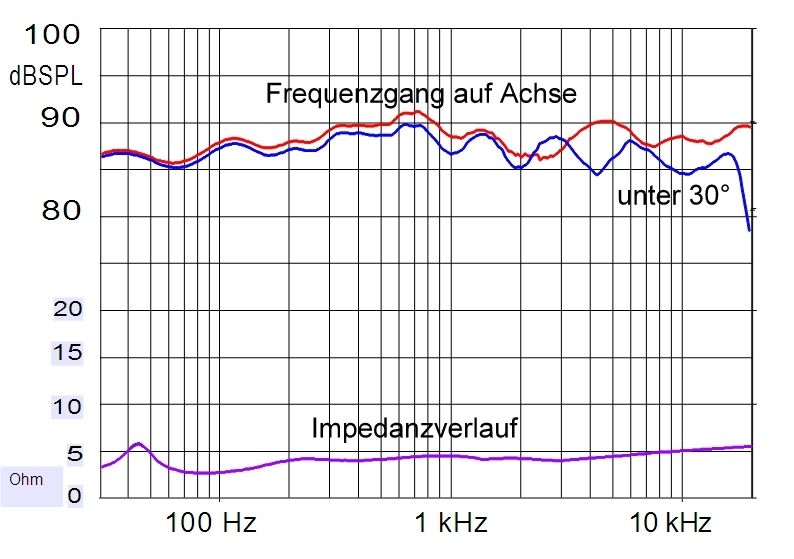
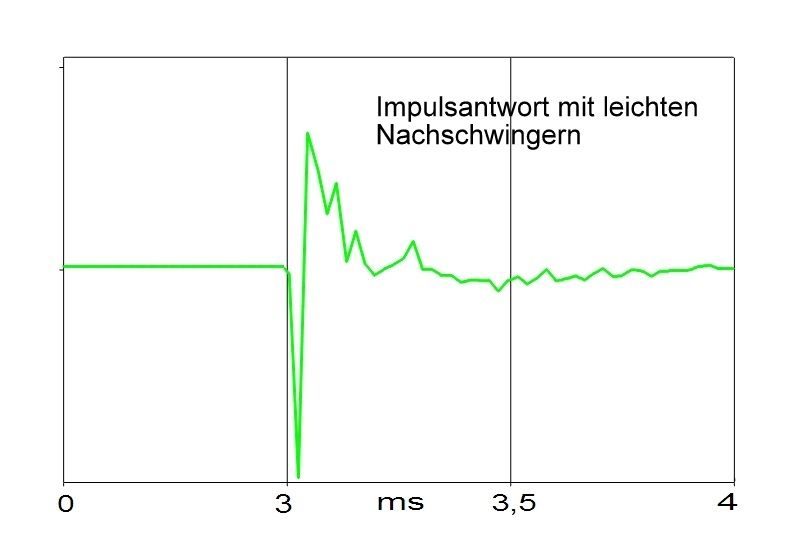
Measurement Values
| Rated impedance at DC: | 4 Ohm |
| Minimum impedance: | 2.8 Ohm |
| Minimum impedance at: | 83 Hz |
| Maximum impedance: | 6 Ohm |
| Maximum impedance at: | 43 Hz |
| Sound pressure characteristic (2.83 V/m): | 90 dBSPL |
| Power for 94 dBSPL: | 4.5 W |
| Lower cut-off frequency (-3dBSPL): | unter 30 Hz |
| Distortion factor at 63/3k/10k Hz: | 0.4/0.14/0.25 % |
Stereo Test
Sound Level Floorstanding speaker: 98%
Price/Performance
Lab Comment
Very linear frequency response with a deep bass. Deviations in the range of +/- two decibels and only gentle off-axis drop. Uncritical impedance response, high efficiency, precise impulse response and lowest distortion.
Features
Spike system, separate midrange/treble module with adjustment to the listening position, exchangeable resistors in the crossover, grilles
Test Devices
Turntable: Transrotor Rondino nero/TR5009
Cartridge: Transrotor Figaro, X-quisite CA
Media-Player: T+A MP3100HV
Pre-/Power Amp: Accustic Arts Tube PreampII-MK2/AmpII-MK4
Integrated Amp: Audionet WATT, NAD M33
Speaker: B&W 800 D3, Dynaudio Confidence 50
Cable: HMS Gran Finale Jubilee and Suprema (Mains, NF+LS), In-Akustik LS-2404
 MAGAZINE
MAGAZINE